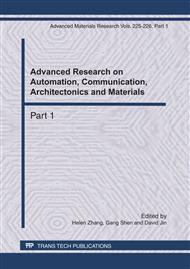p.8
p.13
p.17
p.21
p.26
p.31
p.35
p.39
p.43
Study and Apply the Visualization Intelligent Feedback Analysis System of Tunnel Construction
Abstract:
Aiming at the problems of conventional underground engineering feedback analysis methods, such as being limited in local optimization and computing data being very complex, the paper introduced difference evolution arithmetic and visualization toolkit, and combined three dimensional numerical simulation and orthogonal design, developing the intelligent feedback analysis system based on Visual c#. The system theory, software frame and develop method are introduced, the system could be used to calculate and evaluate the state of tunnel surrounding rock based on in-situ monitoring data. The system is applied in an actual tunnel engineering, the analysis results are satisfied, which states it is feasible and has good potential application.
Info:
Periodical:
Pages:
26-30
Citation:
Online since:
April 2011
Authors:
Price:
Сopyright:
© 2011 Trans Tech Publications Ltd. All Rights Reserved
Share:
Citation:


